From Sunday 20 January to Monday 21 January 2019, a delegation of 11 teachers and 23 students made the long journey northward to Cao Bang province. Over the two days, the group visited two local schools in Quang Trung commune and Cao Bang town to deliver donations, engage in exchange of culture and experiences, as well as toured the Pac Bo National Monument Complex.
Early on Sunday morning, 20 January 2019, Nguyen Sieu School's charity delegation of 34 teachers, staff and students set off from our campus in Cau Giay district. The 7-hour journey would bring us to Cao Bang, a northern mountainous province which borders the Chinese province of Guangxi. Cao Bang is a relatively poor region compared to other parts of Vietnam. It is home to eight ethnic groups, the majority of which are Tay, Nung, Dao and Hmong.
Hardship in the Mountains
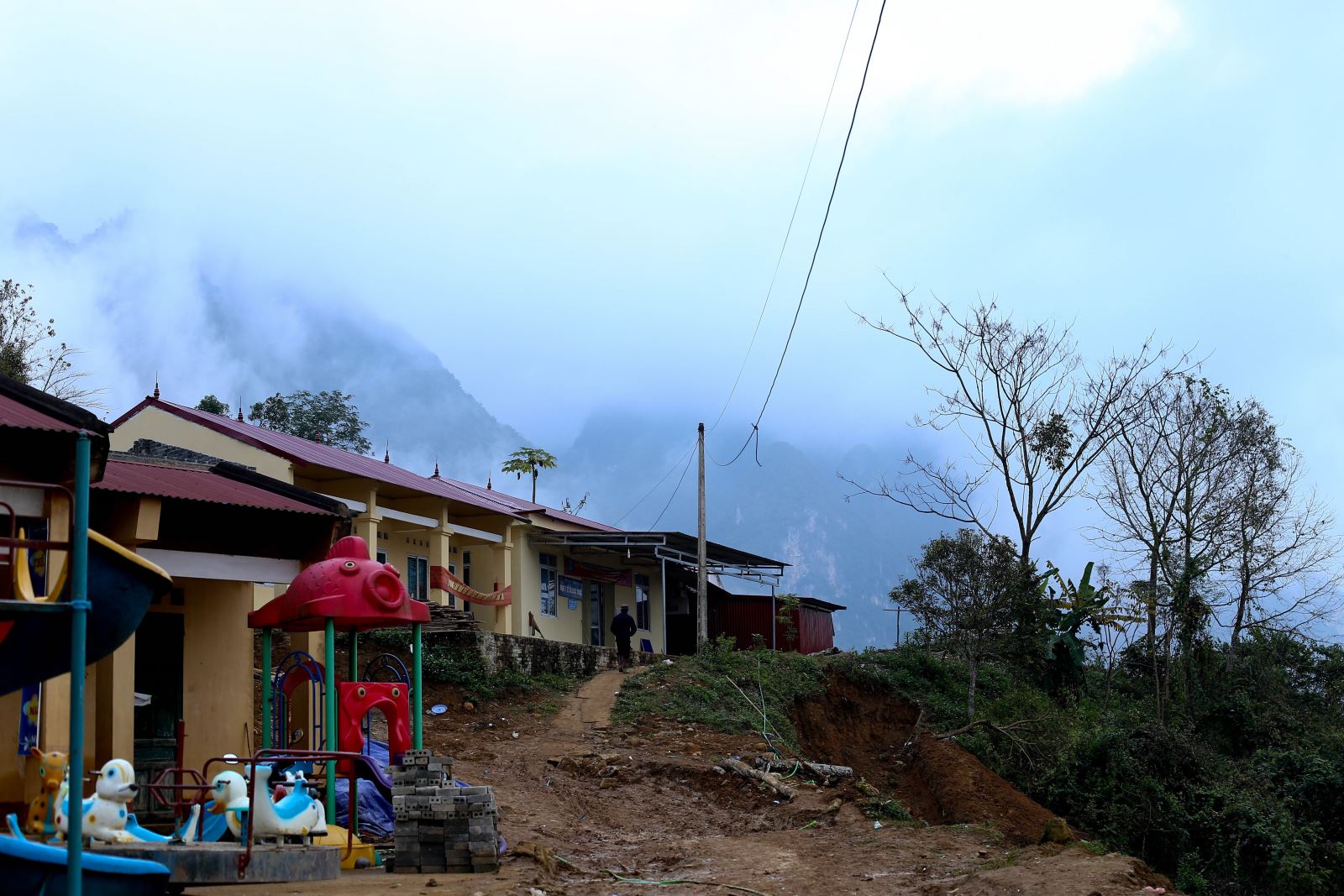
Quang Trung Schools compound. Mountains of Cao Bang in the background.
The first destination of our charity trip were Quang Trung Kindergarten, Primary and Secondary Schools in Quang Trung commune, Hoa An District. Though the school was “only” 15km from Cao Bang city, the road there was more difficult than we had anticipated. Before the coach turned off the main road, our driver realised that the coach would not be able to fit down the single-lane winding road which was our only route to the school. Furthermore, we were amused to see that there was a wedding party that had spilt over onto the road, making the path even more narrow!
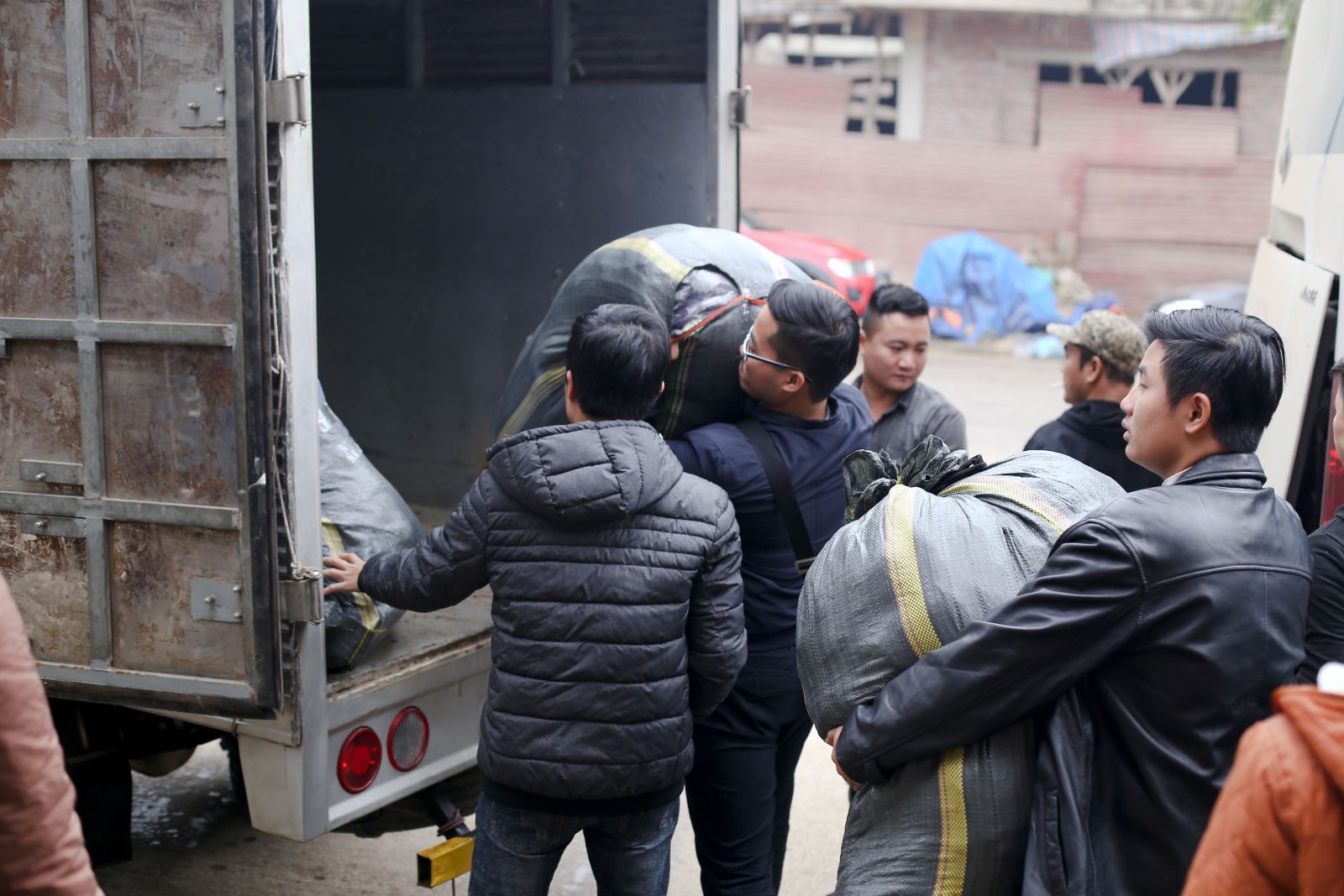
Loading and unloading donated items onto a smaller truck that would be able to transport the group and items down the small country road.
The group managed to find a truck and a small local bus that would be able to take the group to our destination. After half an hour of moving the gifts for the school to the new vehicles, we were finally able to board the bus and start off for Quang Trung commune.

The road ahead.
Even then, the journey was difficult, especially when we faced large trucks and buses going in the other direction. At one point, we had to stop to avoid falling rocks from some construction on the mountainside.

After a day of rain, the road up to the school had become muddy and slippery.
After a very bumpy, but scenic ride, we finally arrived at the school in Quang Trung, which sits on the side of a hill. The views of the surrounding mountains and rice terraces were spectacular, but many of the students, most of which are from the H’mong ethnic group, were running around in clothing that was torn and mud-stained, exposing them to the cold mountain air.
According to Nguyen Sieu’s media manager, Ms. Hua Anh Nhue, who hails from Cao Bang herself, “Most of the children of Quang Trung Schools are from the H’mong ethnic group. They live on top of mountains, and very far from schools. Many of them start the journey to school at 4am when the sky is still dark, and there is also a lack of clothes and food.”
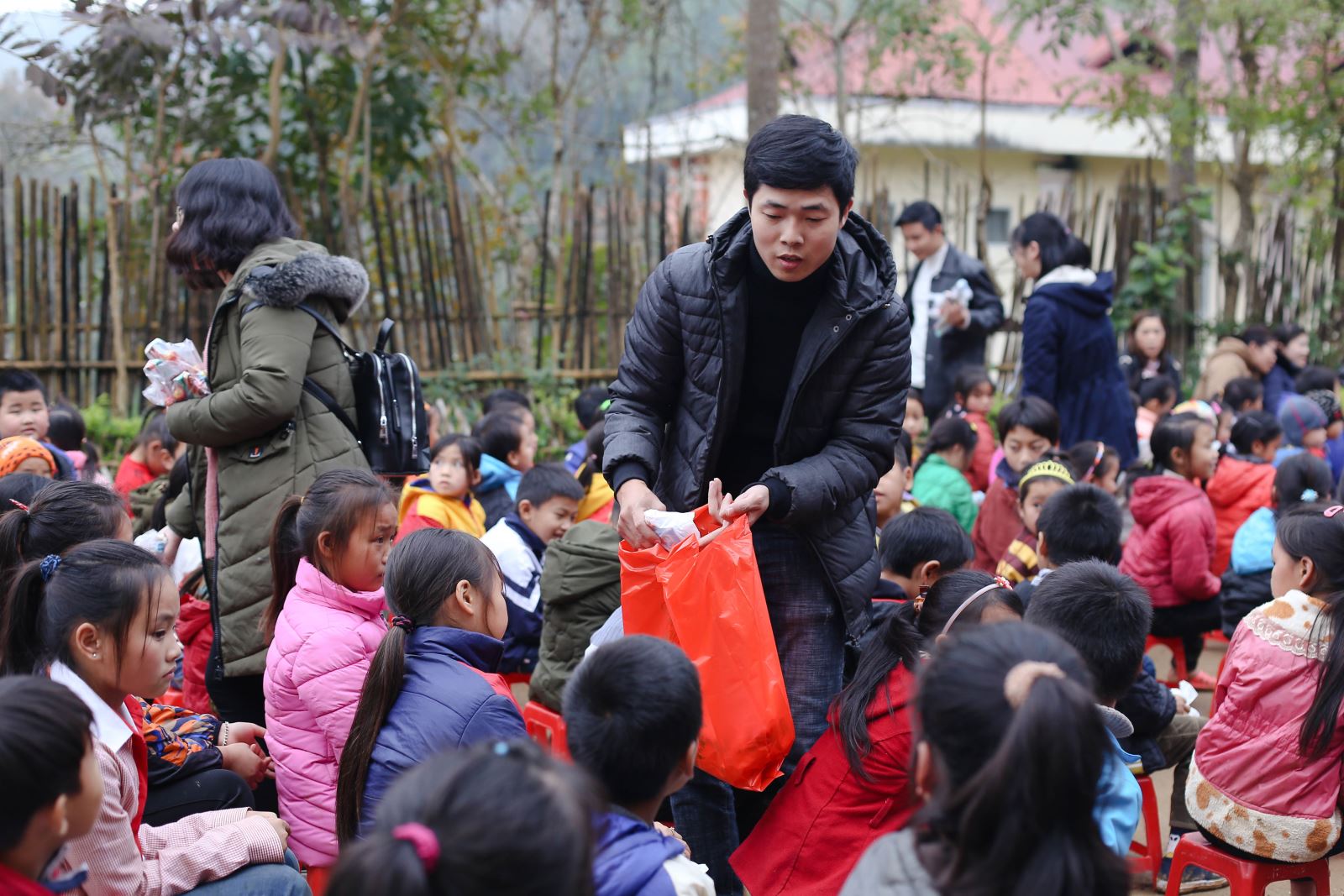
Distributing gifts to the students of Quang Trung Schools.
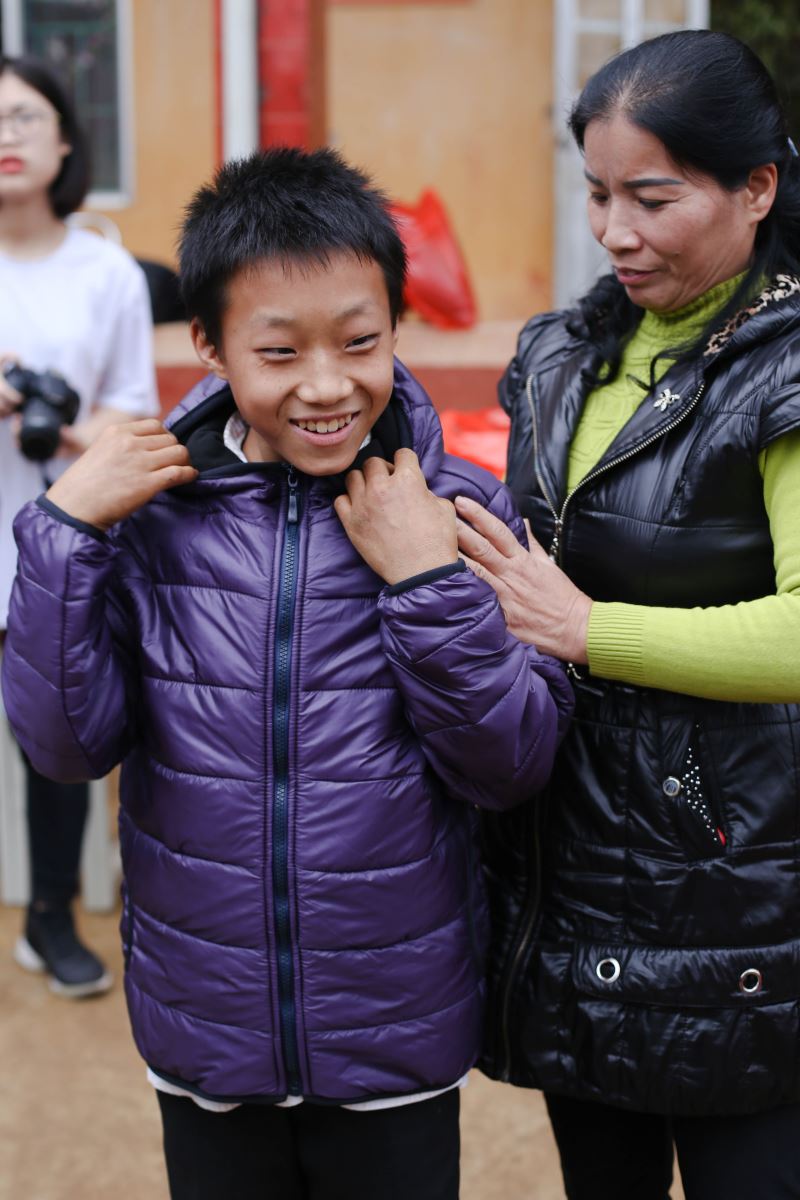
A young boy looking happy with his new warm coat which will help him brave the bitter winds during winter and early spring.
Our students distributed gifts of candy, as well as warm coats for each of the students. With money raised from Nguyen Sieu’s annual Spring Fair, the school had also bought mattresses for boarding students, and foam tiles for the kindergarten classes.
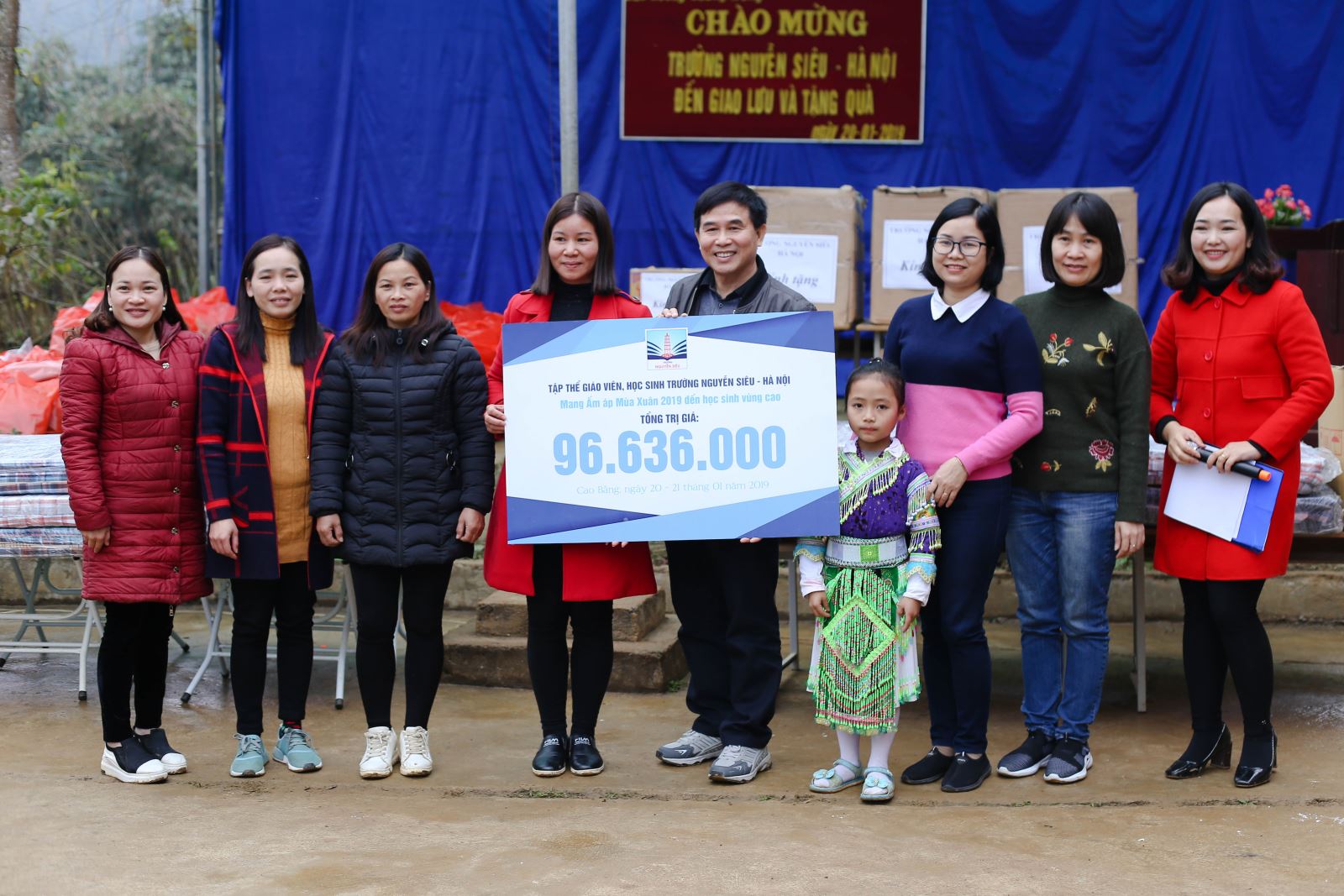
In addition, Nguyen Sieu School presented a gift of VND 96,636,000 to Quang Trung School. This gift included scholarships for a number of students.
Cao Bang Boarding School for Ethnic Minorities
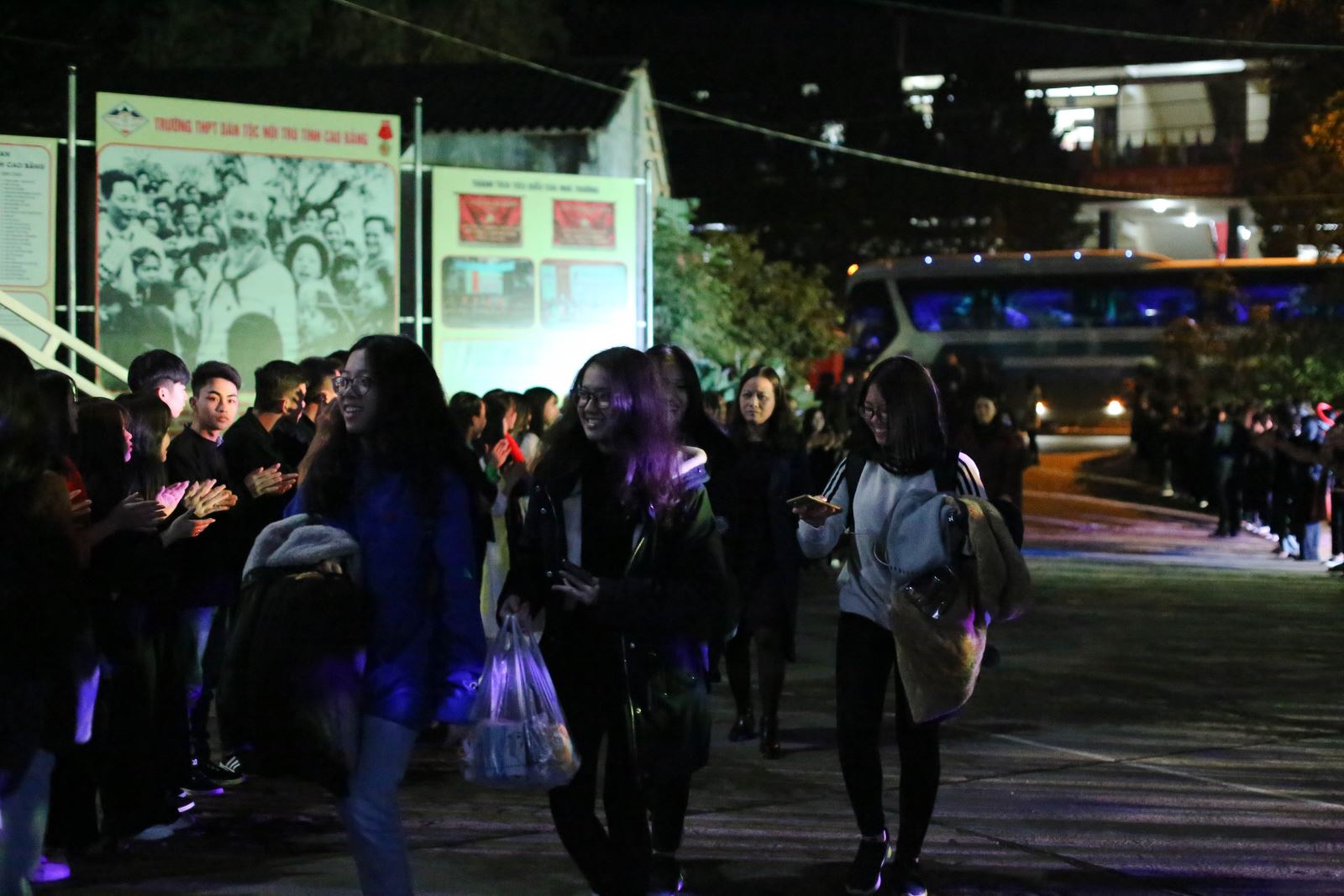
Students walking into an incredibly welcome from our hosts.
As the sun set and temperatures fell even further, we drove back to the city to our last stop for the day: Cao Bang Boarding School for Ethnic Minorities. Given the hardships and lack of access to education faced by many ethnic minority groups, the School was established to provide quality teaching to students from the most remote and impoverished parts of Cao Bang province, giving them an opportunity for a better future.
Despite the obstacles they face, over 90% of their graduates have passed the university entrance examination, and have even been named as valedictorians in some schools.

Upon alighting, we were met with the heartwarming sight and sound of all 400 students applauding our arrival enthusiastically. They had lined up along the road to welcome us, and many of them were wearing their traditional dress. We made it to the shelter just in the nick of time, as a torrential downpour began once we had made it indoors. But even that could not dampen our spirits for the night.
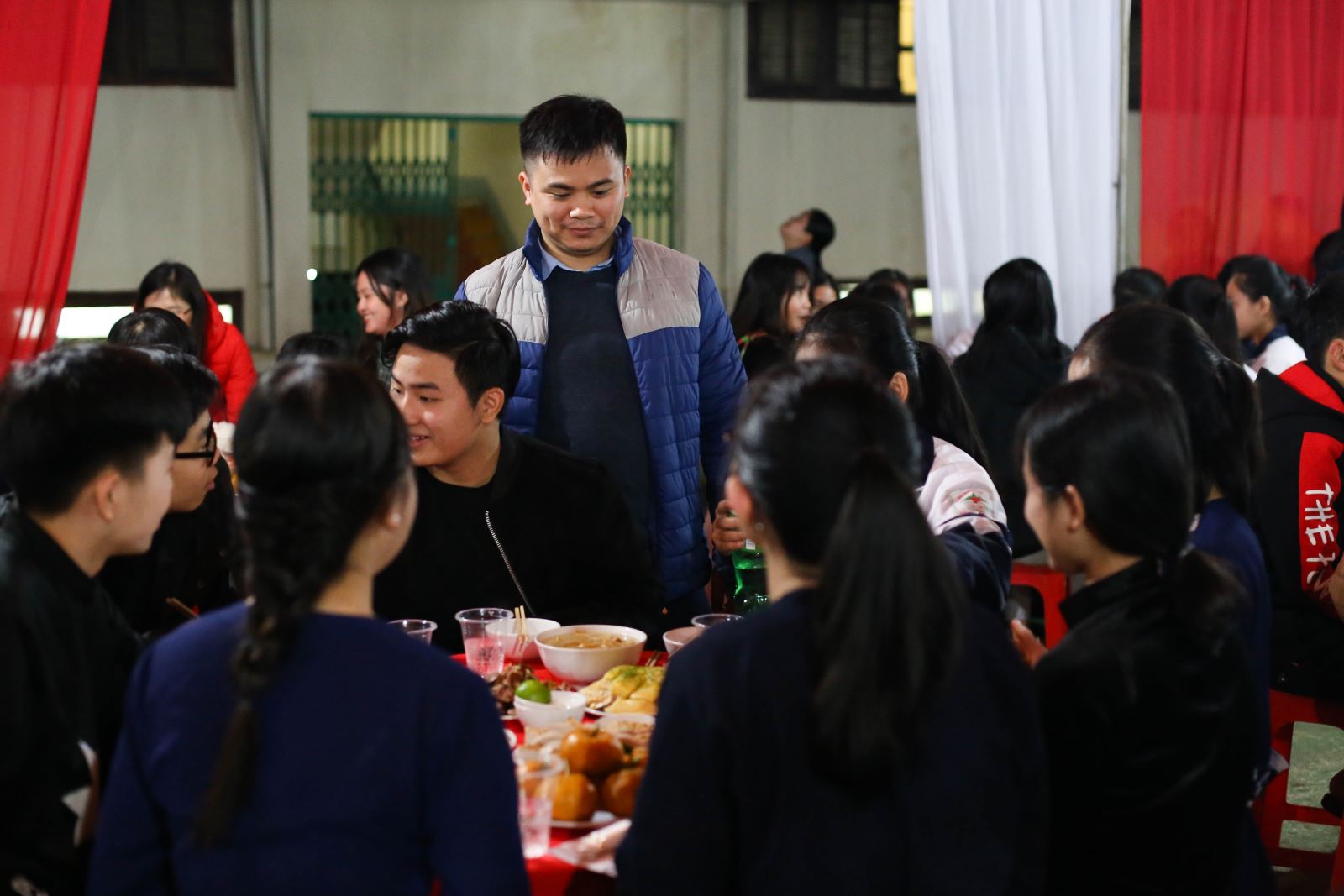

Students and teachers from both schools made joyful toasts to each other in honour of Tet, or the Lunar New Year! The tables were piled high with highland specialities.
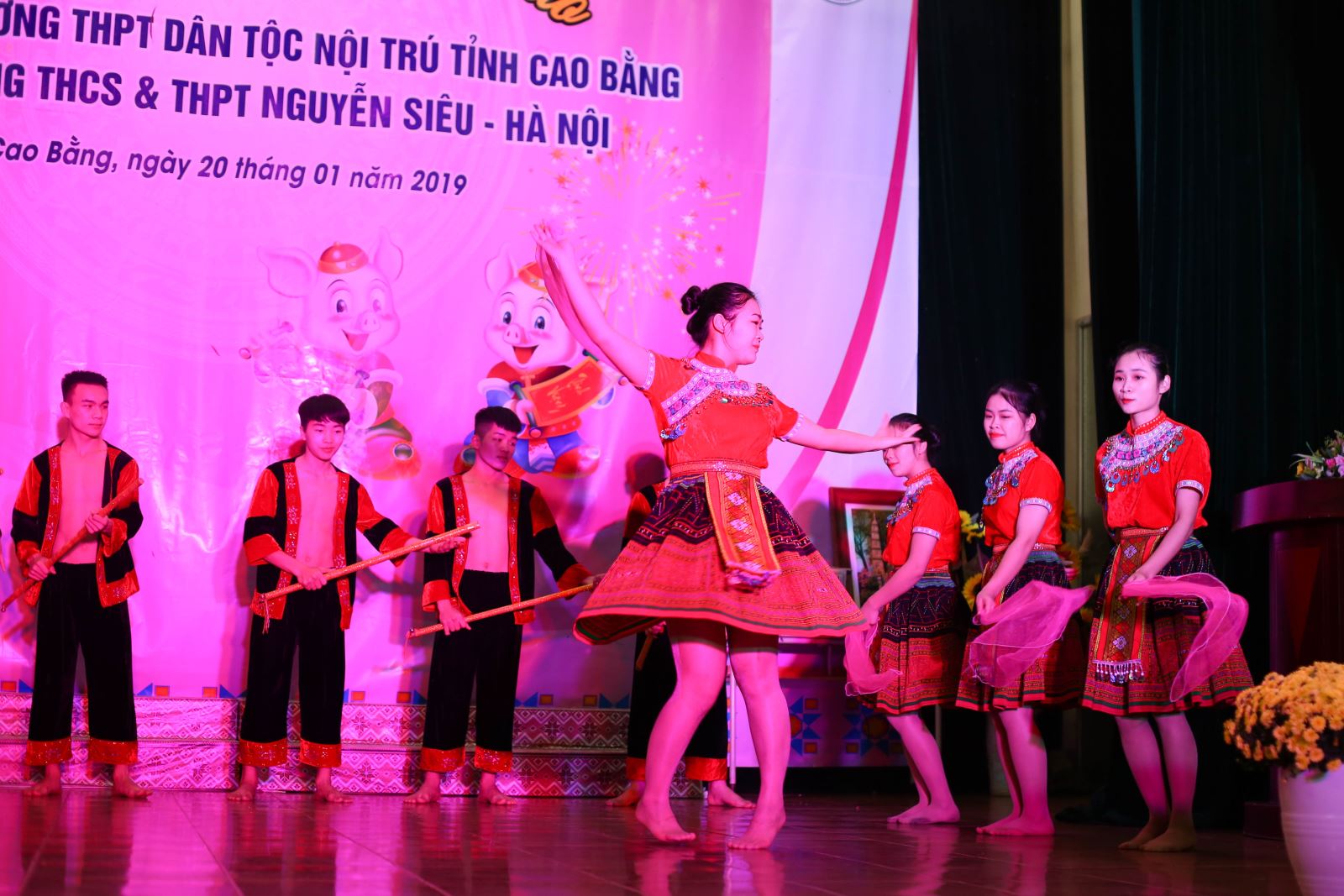
After dinner, all the students moved to the school hall, for a series of spectacular song and dance performances, showcasing the music and colours of different ethnic groups: Kinh, H'mông, Lô Lô, Dao tiền, Tày – Nùng.
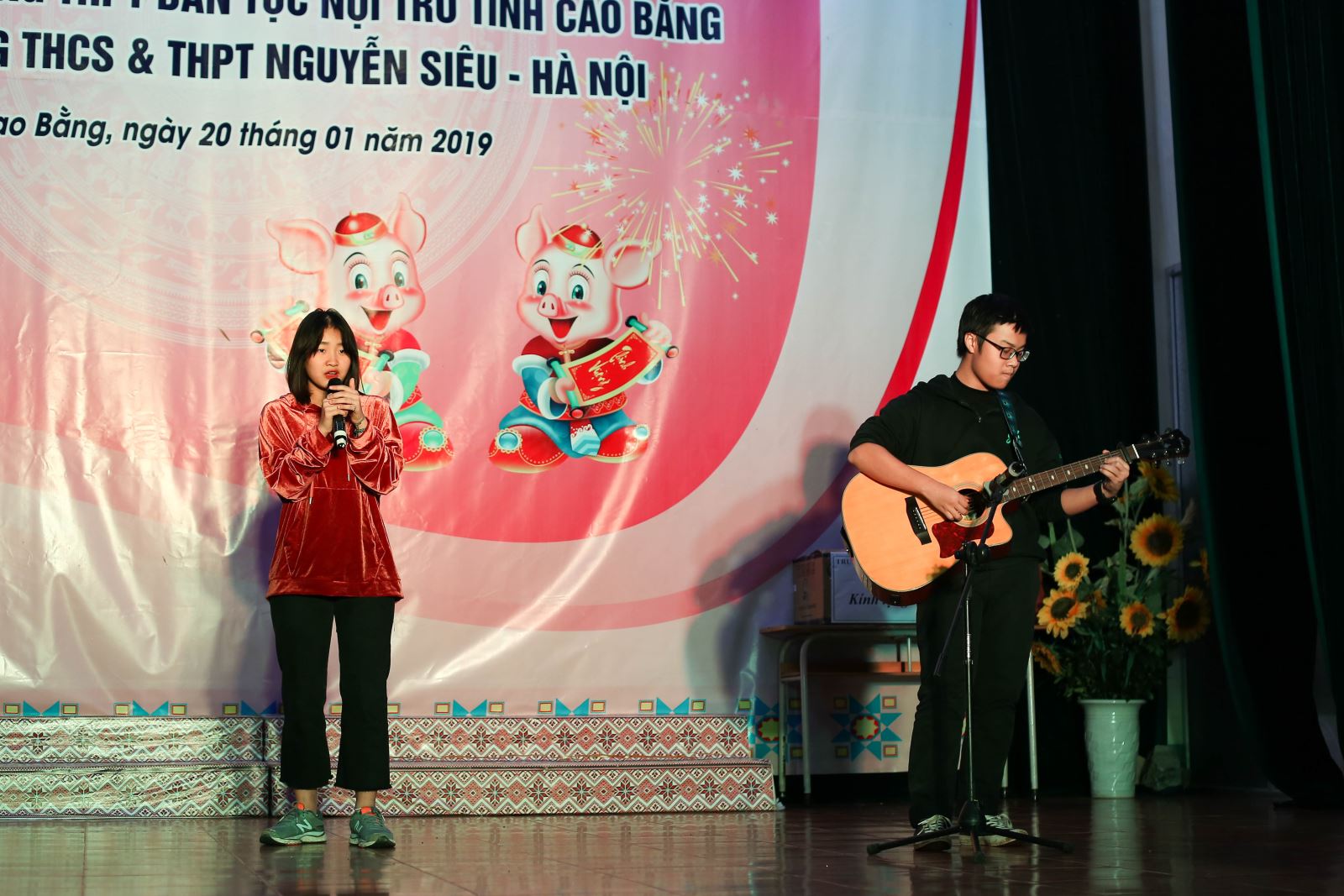
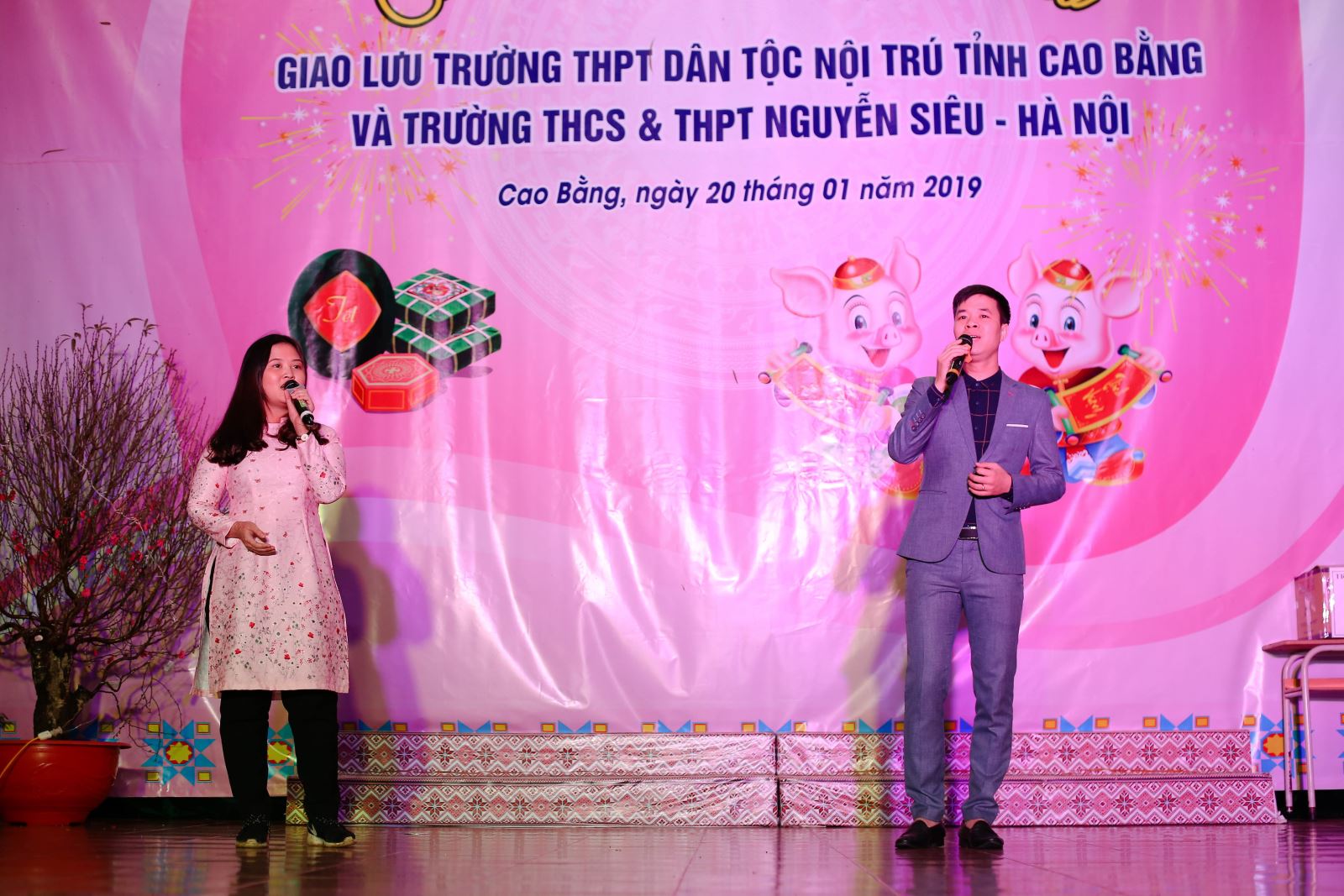
Homecoming
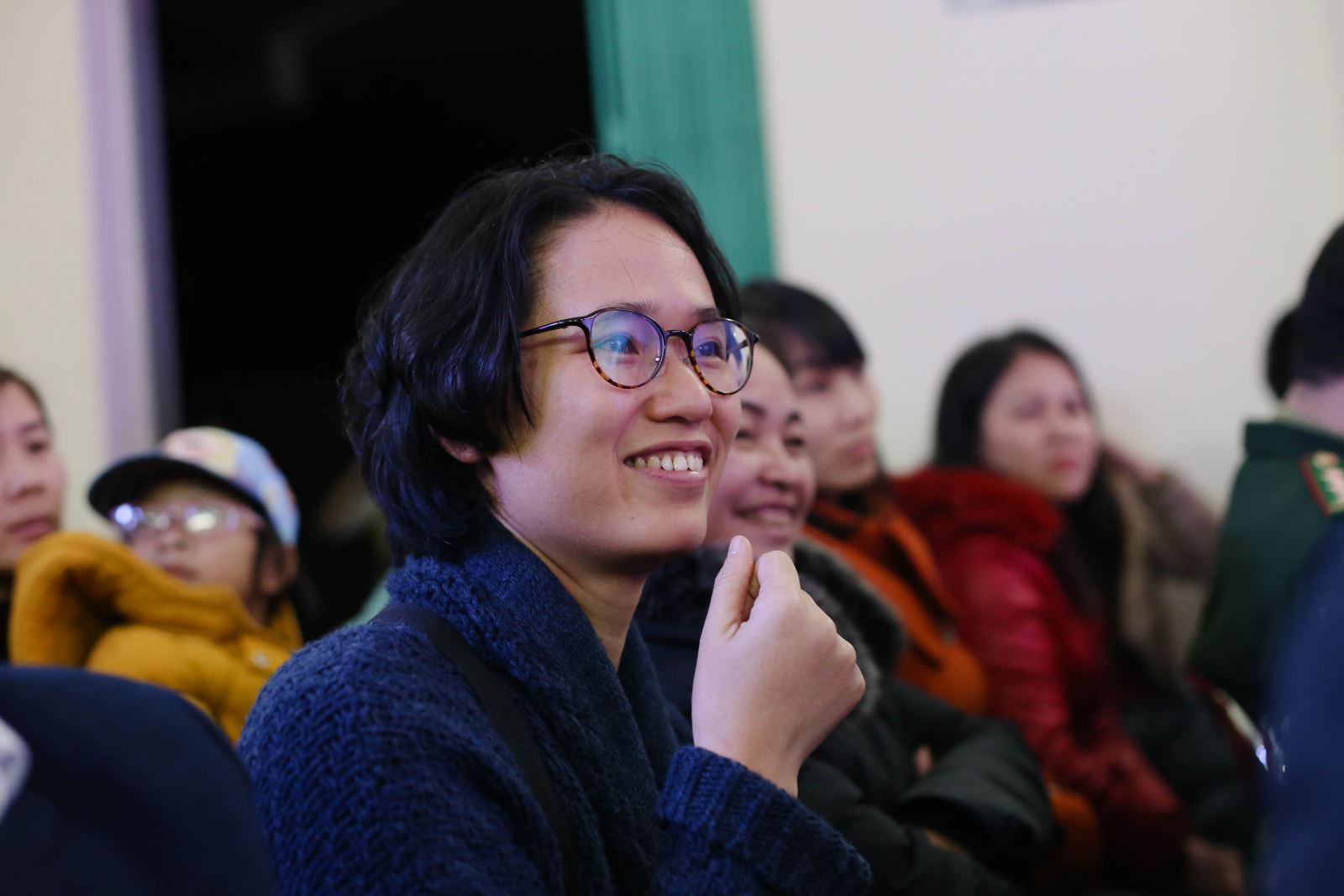
For one of our group members, the visit to the school was a very special trip: many of our students were not aware that the Ethnic Minority Boarding School is, in fact, the dear alma mater of Ms. Nhue. She reflected, “Having the chance to visit my alma mater together with my colleagues and students is an especially meaningful event. I am so happy, so moved to see how they cheered to welcome us. The whole school stood with beautiful smiles, big and endless claps. I saw my teacher again. She is now the principal of the School. When she talked about the school and I watched all the performances of students, I was so happy because the mountain students nowadays are so confident, proactive, intelligent, talented, and so well-mannered.”
Her former teacher, who is now the Principal of the school, shone the spotlight on Ms. Nhue and introduced her as the first student from the school to achieve accolades on the national level in the academic year 1996-1997. Since then, Ms. Nhue’s family has continued to provide assistance to students of the school in times of need. She was especially touched when her former teacher called her “a bridge” between the two schools.

Holding the torches.
The concert was followed by a school tradition that is looked forward to each year: a big bonfire!
 Strains of Vietnamese and electronic music filled the otherwise quiet country night, as our students danced and sang with their new friends from the Boarding School.
Strains of Vietnamese and electronic music filled the otherwise quiet country night, as our students danced and sang with their new friends from the Boarding School.
The rains had eased up by then, and student flocked excitedly to the courtyard, where the wood for a bonfire had been piled up. The flame was lit, and it rose higher and higher into the sky, spreading warmth to all the students, teachers and staff standing around it.
A Glimpse into the Lives of Others
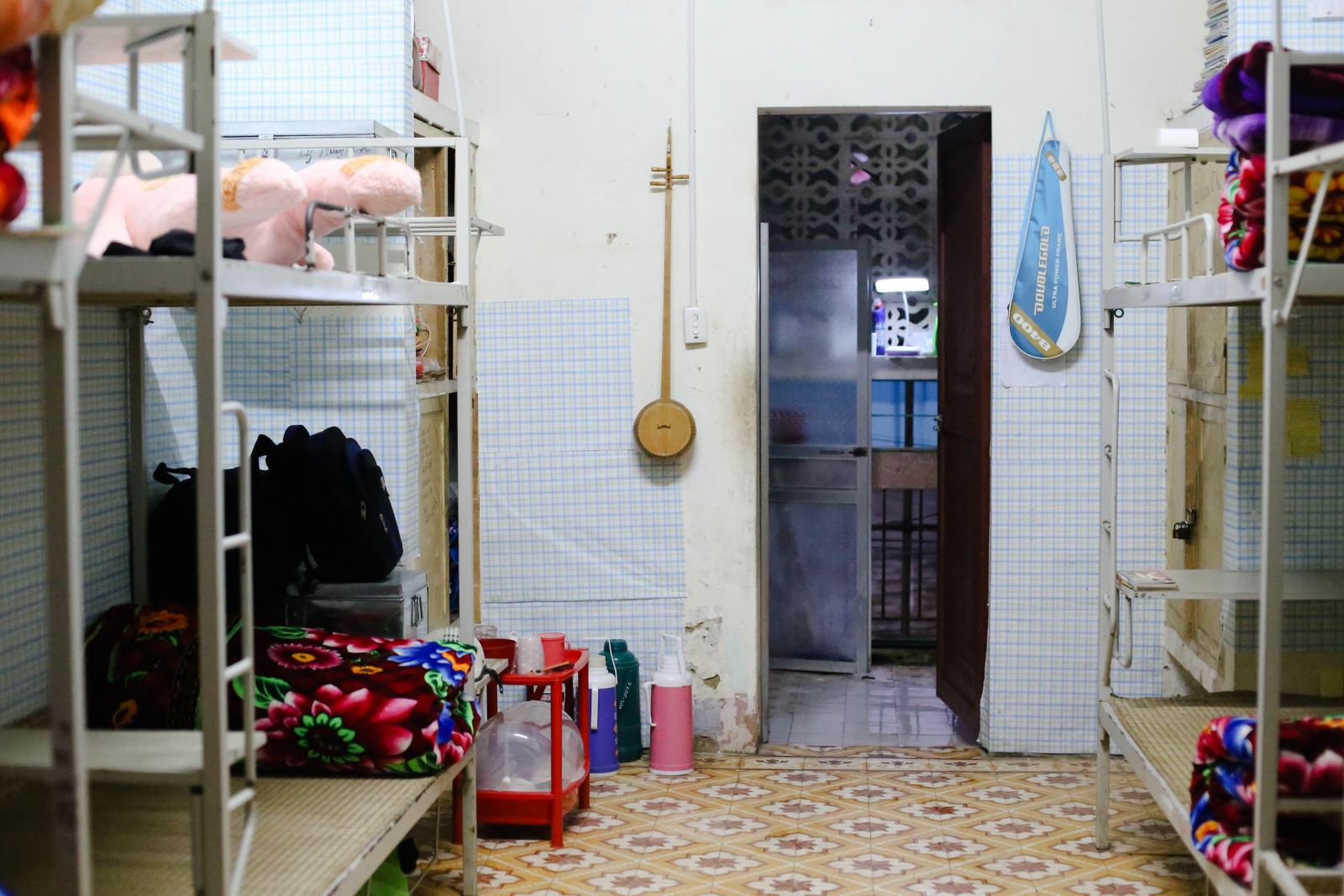
A dorm room in the Boarding School: basic facilities and living conditions that our students are otherwise not used to. But their spirits were warm!
When the embers of the fire had died out, our students moved upstairs to the school dormitory, a series of buildings around an open courtyard, where they spent the night. Spares and basic, the boarding house was definitely a far cry from Nguyen Sieu’s modern campus, and something the students had to adapt to: on a cold night of about 7 degrees, the students had no hot water for a shower, and some students slept two to a bed (which is also a good way to keep warm!).
Despite the hard conditions, exhausted from a long day of travelling, everyone slept soundly through the cold night.

Nguyen Sieu students getting ready for bed.
According to Ms. Nhue, the living conditions and facilities have deteriorated over time. For us, it was an experience to learn from, but for the Cao Bang students, this is their way of life. Even then, they remain cheerful and are determined to do well in school.
Back in Time: Pac Bo National Monument Complex
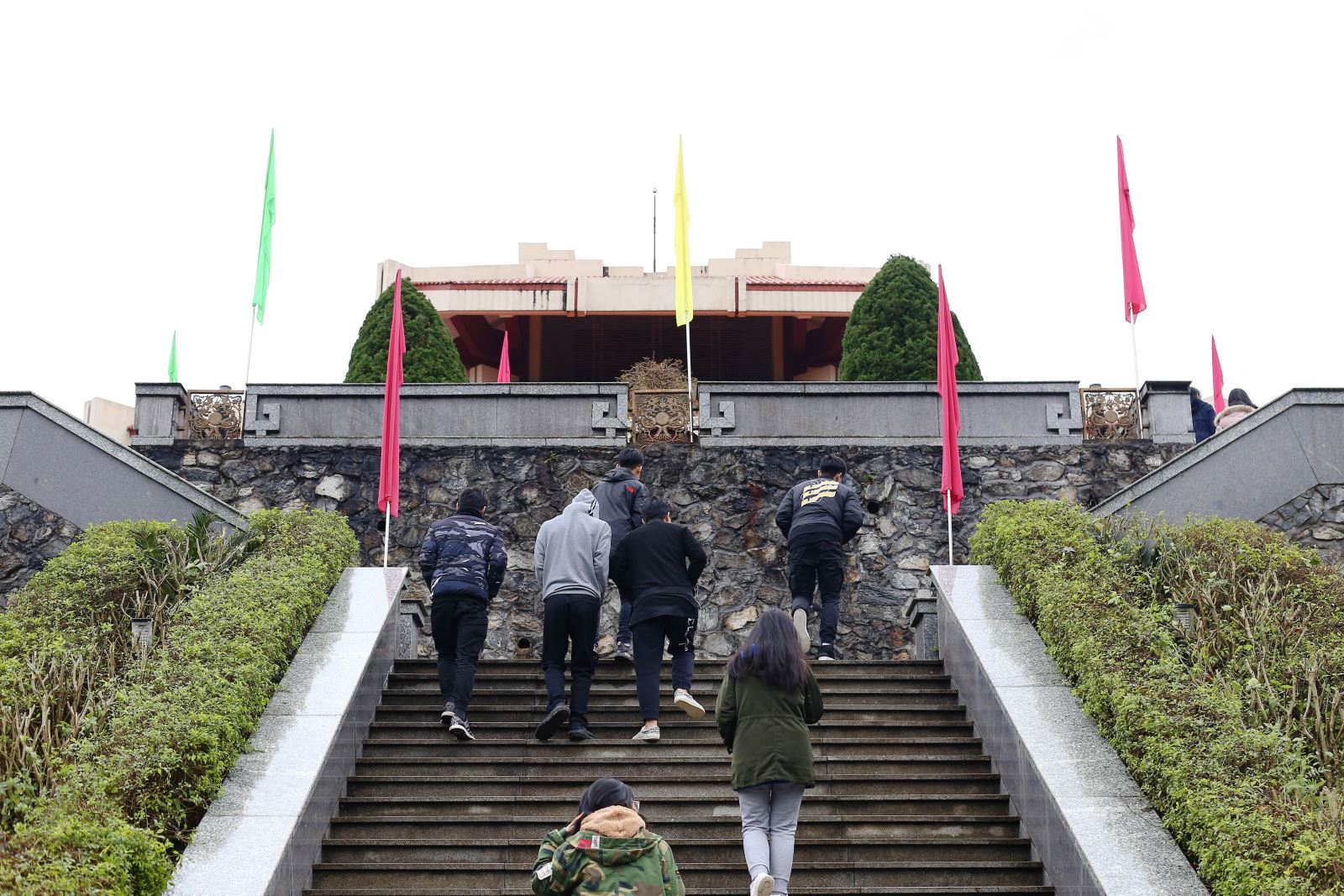
Climbing the stairs to "Uncle Ho" Temple.
We woke up early the next morning to travel to the Pac Bo National Monument Complex, which encompasses the “Uncle Ho” (Ho Chi Minh) Temple, Pac Bo caves, “Lenin Stream”, “Karl Marx Mountain” and Kim Dong Tomb.

The crystal-clear emerald waters of "Lenin Stream".
The tour guide shared more about the history of this area, which fittingly, means "source mouth". Pac Bo is historically renowned for being the village in which Ho Chi Minh returned to from China after 30 years, in January 1941, and established a revolutionary force with the help of the villagers, and was the base for his guerilla activities over the next two decades. This is also where the Vietnam Independence League, or "Viet Minh" was established in March 1941.
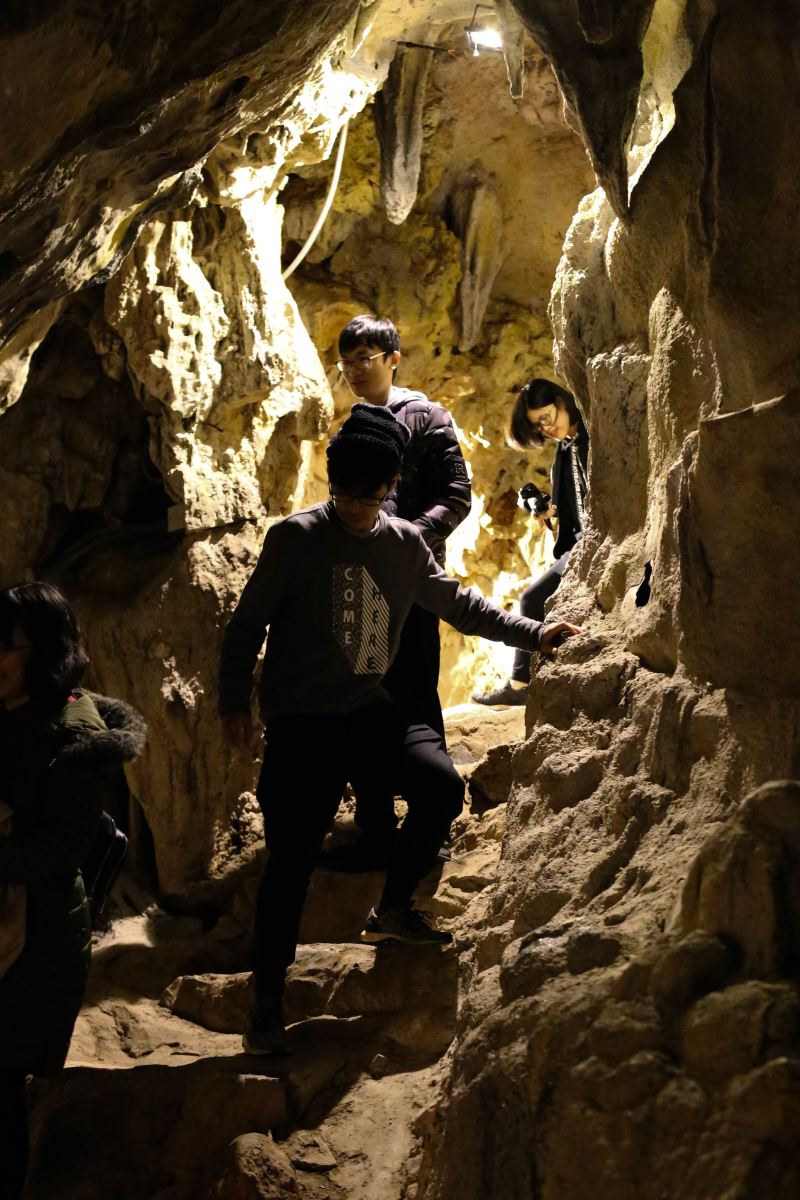
Students entering the cave.
We ventured down into the cave where Ho Chi Minh worked and slept, touched with our own hands the stone table he wrote at.


Taking up the challenge to make our way across the narrow path of rocks.
A Young Hero
Our final stop in Cao Bang was at the tomb of teenage martyr and hero, Kim Dong.
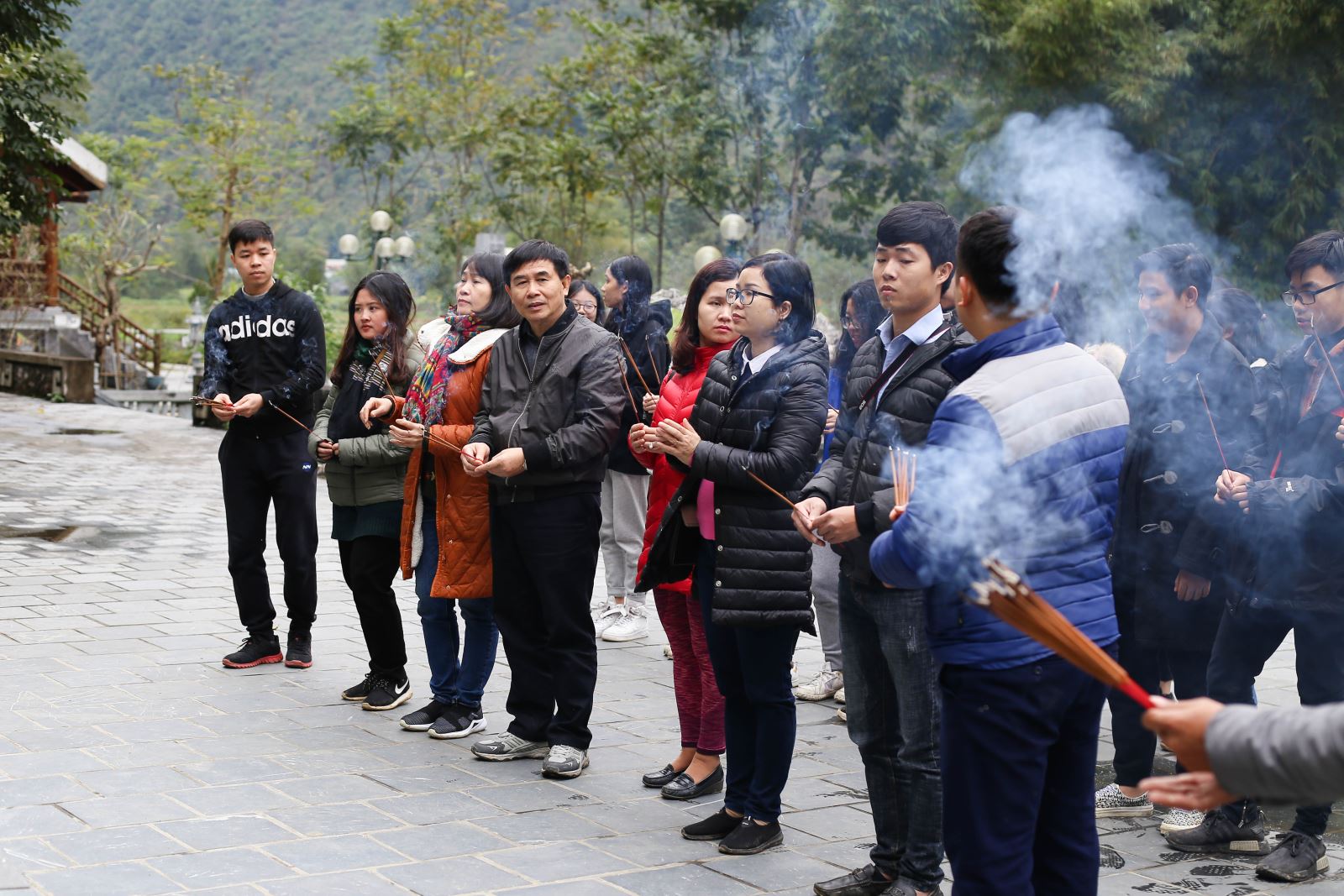
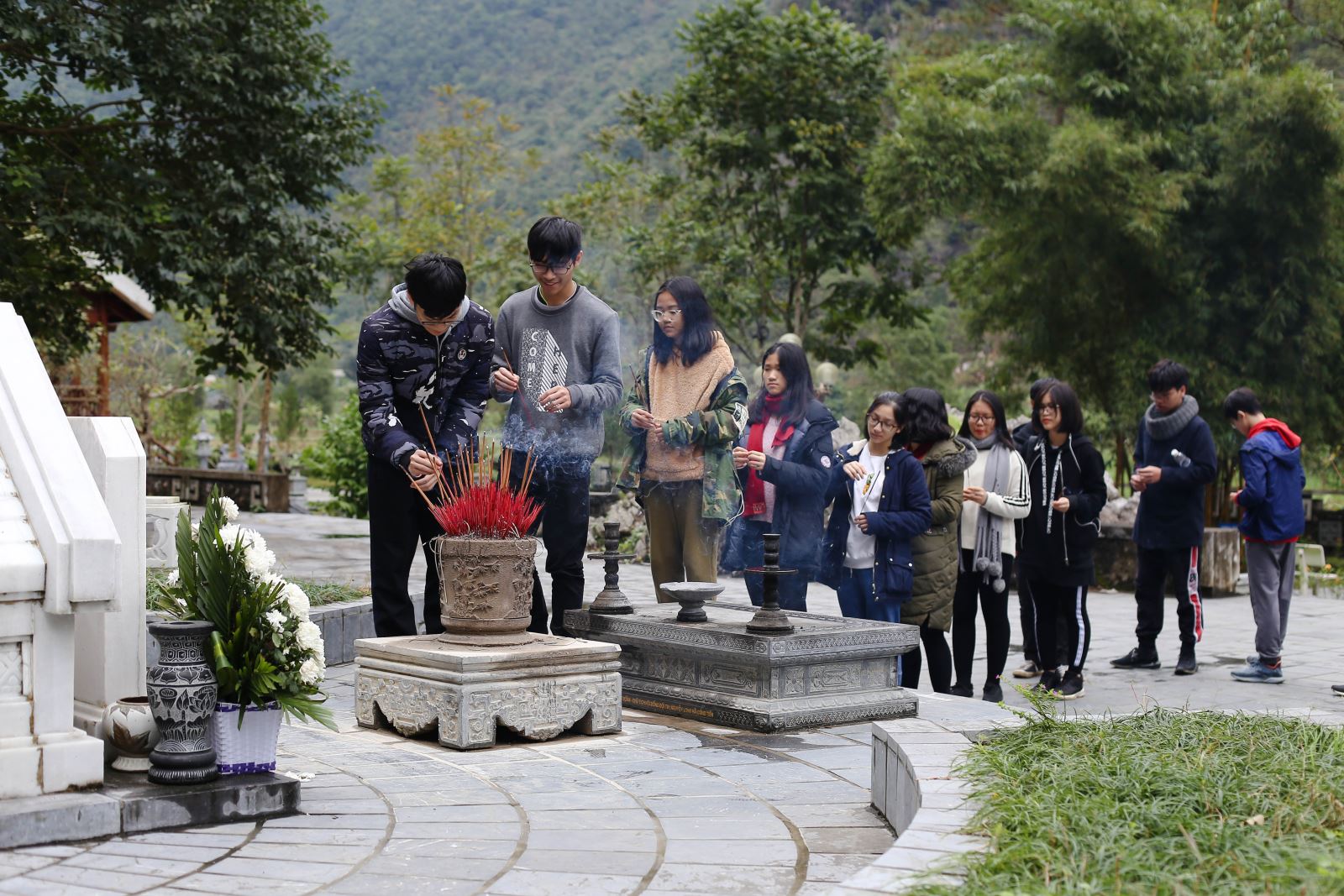
Offering incense and paying respects to the martyr and war hero.
Kim Dong, whose real name was Nong Van Den, a Nung boy, had joined the Save the Youth League in the early 1940s. He died while on duty, at the tender age of 14 years old. The memorial tomb was built to recognise the instrumental role he played in the Vietnamese resistance against the French, by delivering letters to local guerillas and aiding revolutionary soldiers in their covert movements.
Moments of Reflection
During this trip, our students had many moments of reflection and were prompted to think more deeply about their place in society, those who are less well-off than them, and the sacrifices that other youths have made for the good of their nation.


